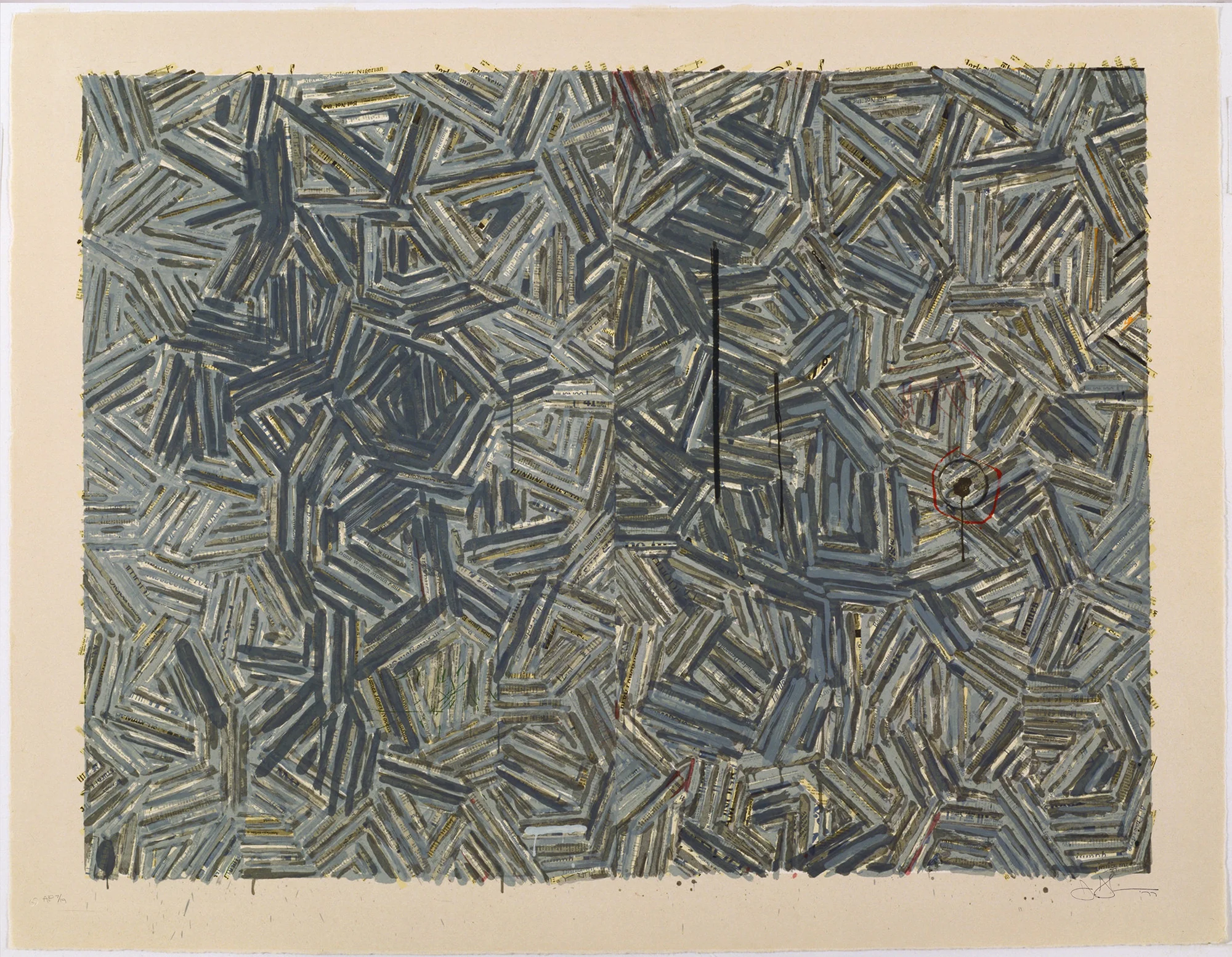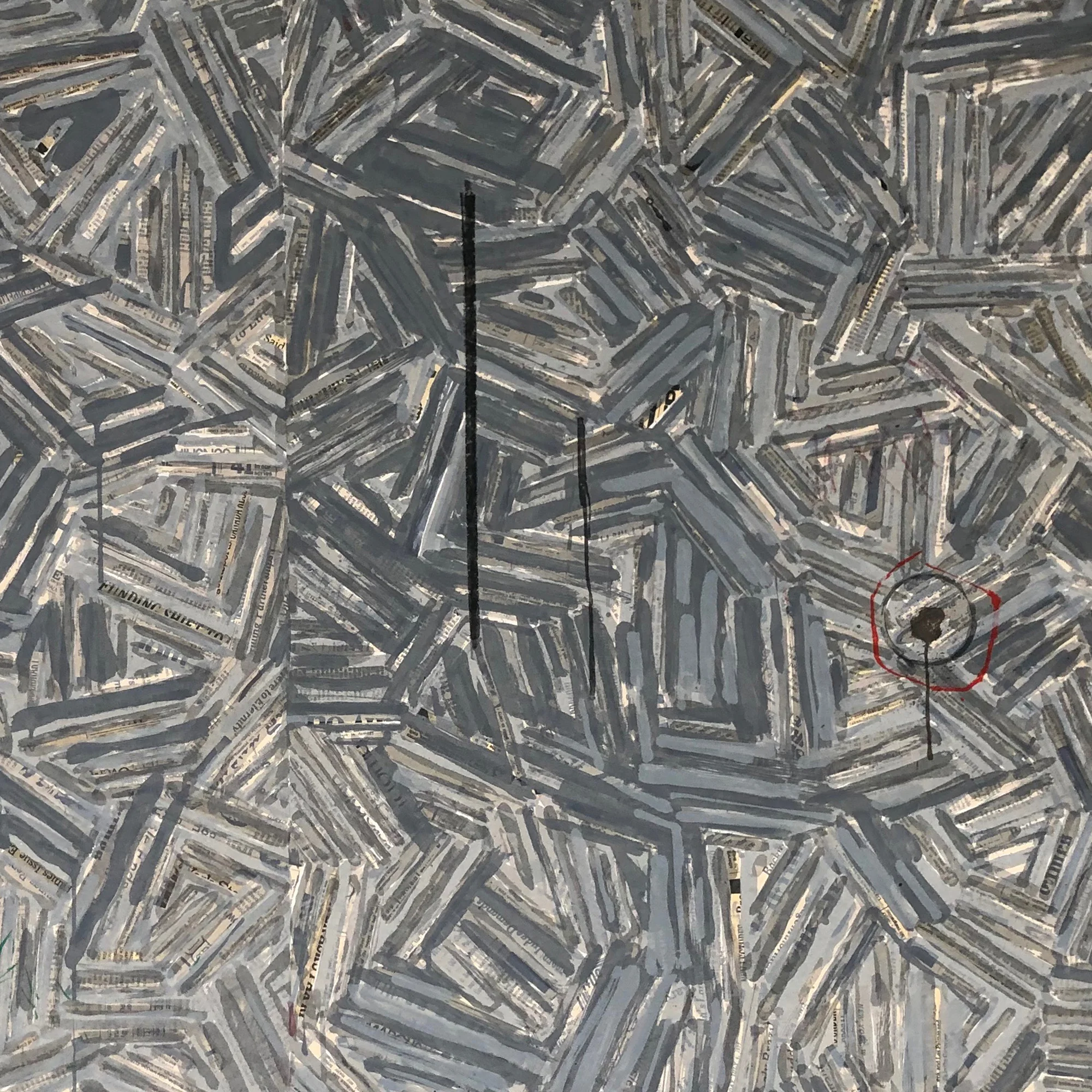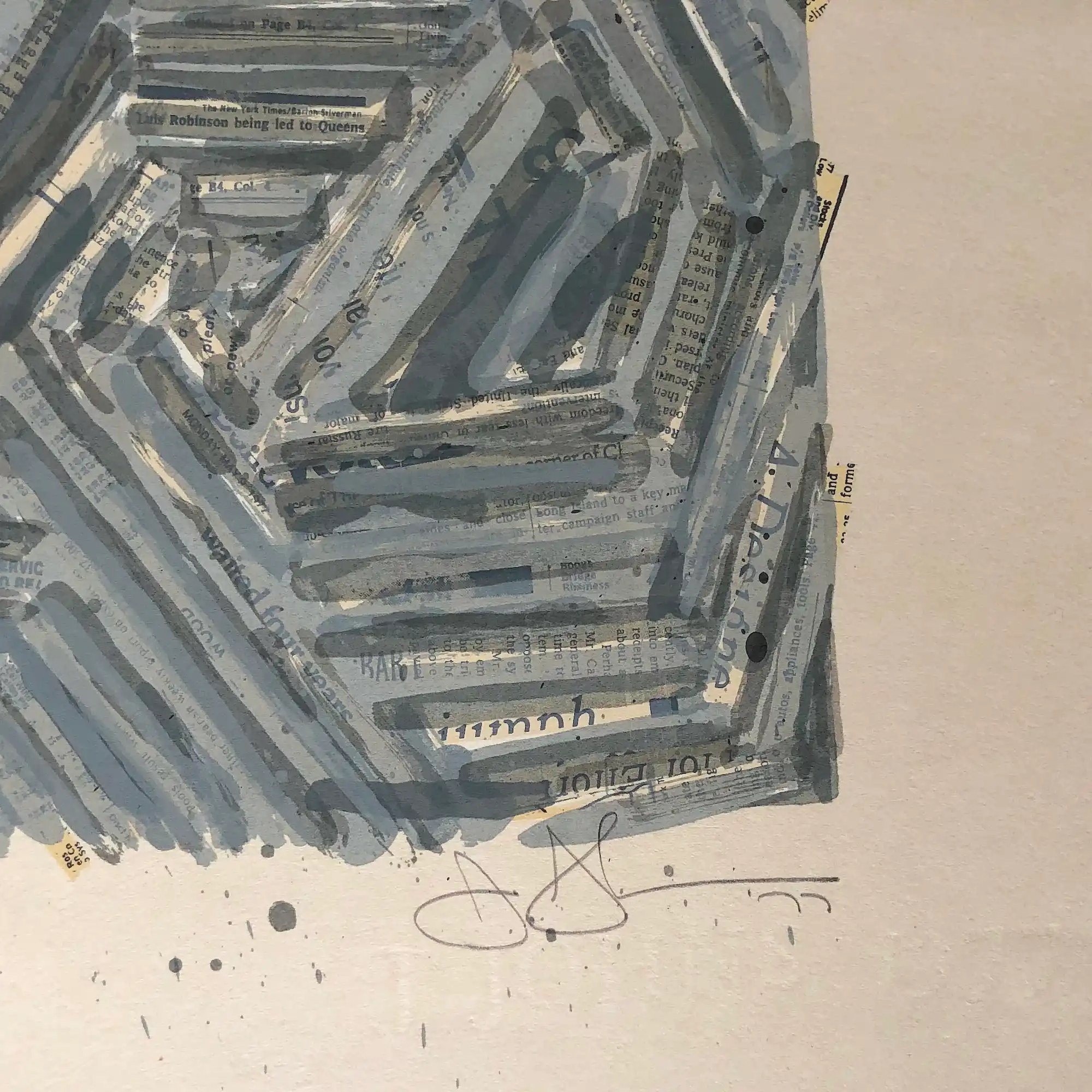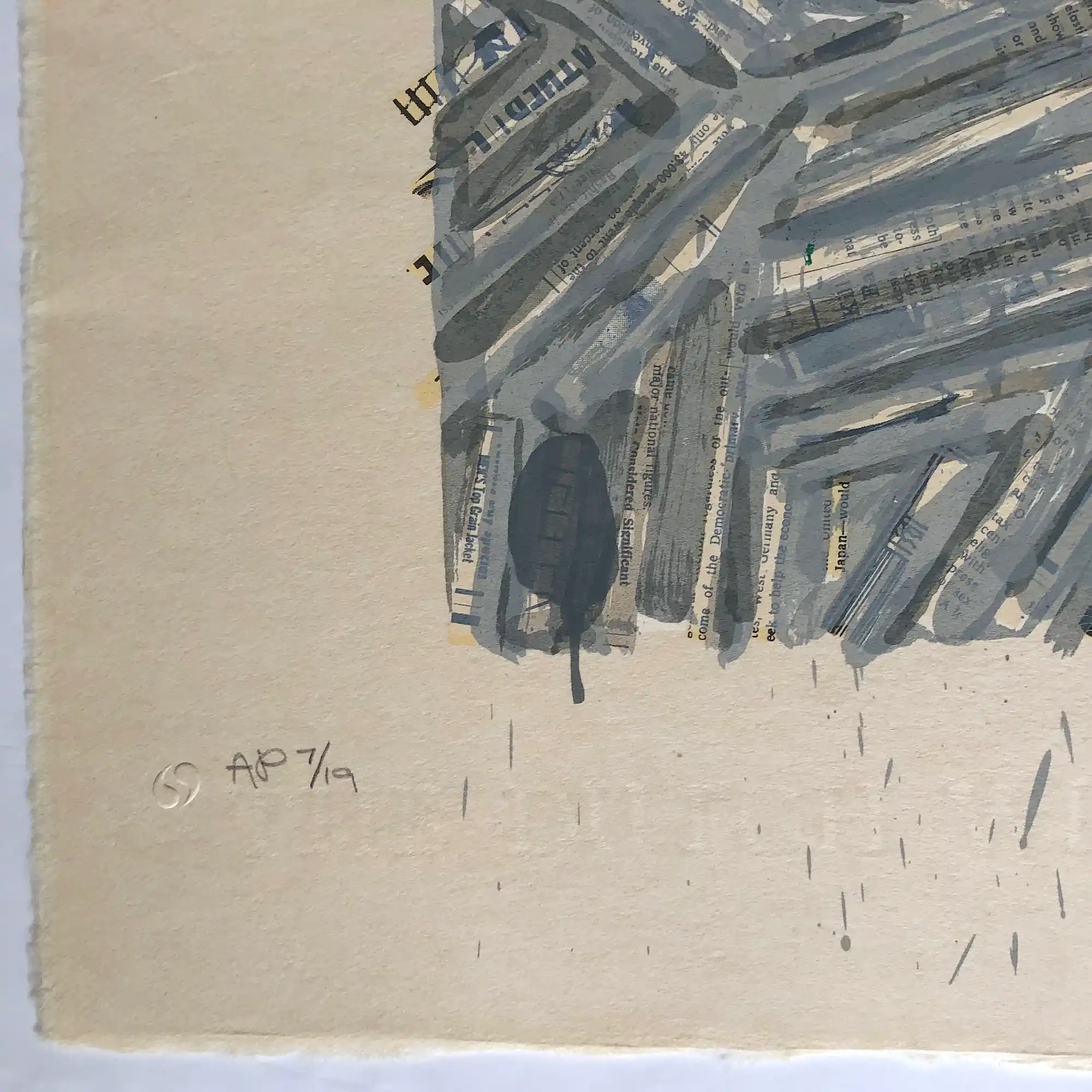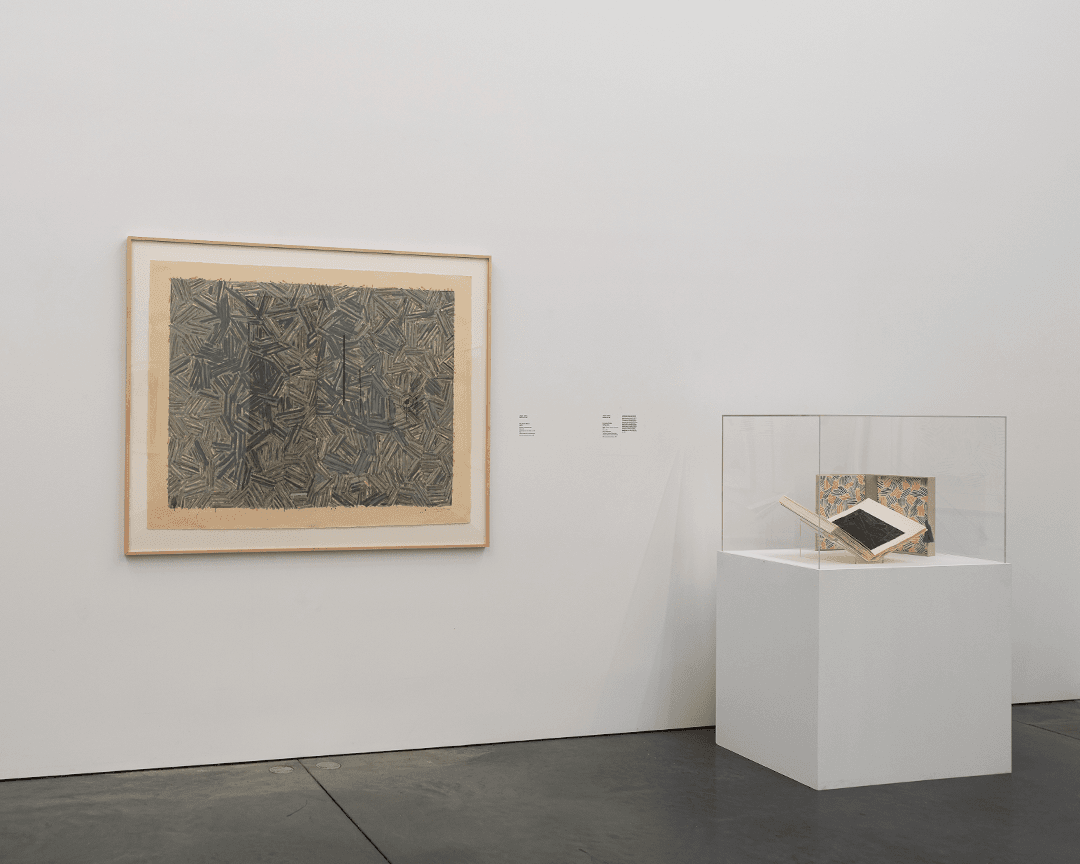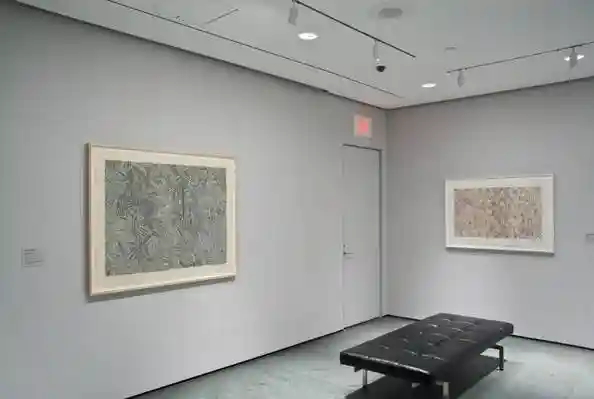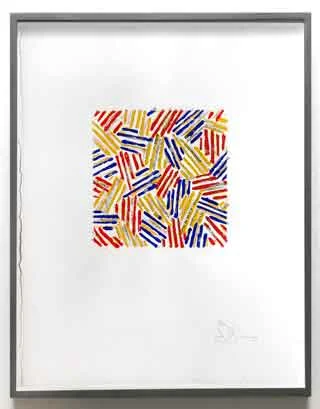The Dutch Wives I (ULAE 187), 1977
paper: 43 1/4 x 56 1/4 inches
image: 37 3/4 x 50 inches
edition: 70 +19 AP's & 5 PP's
signed & dated in pencil "J Johns '77" lower right
numbered in pencil lower left
Printed by: Kenjiro Nonaka, Hiroshi Kawanishi, Takeshi Shimada
Co-published by Jasper Johns and Simca Print Artists, Tokyo, 1977
© 2024 Jasper Johns / Licensed by VAGA at Artists Rights Society (ARS), NY
Literature
Shigeo Chiba, Jasper Johns Prints Exhibition 1960–1989, Tokyo, 1990, Japan Art and Culture Association/Kokusai Geijutsu Bunka Shinkokai, n.p., plate 94, another impression reproduced.
Judith Goldman, Jasper Johns Prints 1977-1981, Thomas Segal Gallery, Boston, MA, 1981, n.p., Segal 1, another impression reproduced full page black and white.
Riva Castleman Jasper Johns: A Print Retrospective, New York: The Museum of Modern Art; Boston: New York Graphic Society, Books/Little Brown and Company, 1986, pg 108, another impression reproduced in full-page color.
Richard Field, The Prints of Jasper Johns 1960-1993: A Catalogue Raisonne, ULAE, New York, 1994, Catalogue Reference ULAE 187, n.p., another impression reproduced full-page color.
Roberta Bernstein, Jasper Johns The Screenprints, Fisher Landau Center, 1996, plate 14, n.p., another impression reproduced in color.
James Rondeu, Douglas Druick, Jasper Johns Gray, The Art Institute of Chicago, Yale University Press, CT, 2008, Catalogue Number 109, n.p., another impression reproduced full page color.
Jennifer Roberts and Jennifer Quick, Jasper Johns / In Press: The Crosshatch Works and the Logic of Print, exh. cat., Harvard Art Museums, Cambridge, MA, 2012, another impression reproduced p. 77.
Jennifer Roberts, Contact: The Art and Pull of Print, Princeton University Press, Princeton and Oxford, 2024), another impression reproduced in color p. 80.
Exhibited
The Museum of Modern Art, New York, Jasper Johns: A Print Retrospective, May 19–Aug 19, 1986, another impression exhibited.
The Seibu Museum of Art, Tokyo, Prints Exhibition 1960–1989, Traveled to The Seibu Department Store, Isetan Museum of Art, Tokyo, April 26th—May 15th, 1990, Isetan Department Store, Niigata, June 7-19, 1990, Isetan Department Store, Urawa, July 18-24, 1990, Isetan Department Store, Matsudo, August 9—August 14, 1990, Isetan Department Store, Shizuoka, August 23—August 28, 1990, another impression exhibited.
The Metropolitan Museum of Art, New York, Jasper Johns Gray, November 3, 2007-January 6, 2008, another impression exhibited.
The Art Institute of Chicago, Chicago Jasper Johns Gray, February 5, 2008-May 4, 2008, another impression exhibited.
The Museum of Modern Art, New York, Focus: Jasper Johns, December 5, 2008–February 16, 2009, another impression exhibited.
Harvard Art Museums, Cambridge, Jasper Johns / In Press: The Crosshatch Works and the Logic of Print, 5/22/2012-8/18/2012
New Orleans Museum of Art, LA, Jasper Johns Reversals, October 23, 2015-January 31, 2016, another impression exhibited.
Carnegie Museum of Art, Pittsburgh, An Art of Changes: Jasper Johns Prints, 1960–2018, October 12–January 20, 2020, another impression exhibited; exhibition traveled to these venues:
Walker Art Center, Minneapolis, February 16, 2020–January 3, 2021
Tampa Art Museum, Florida, April 28–September 5, 2021
Grand Rapids Art Museum, Michigan, October 2–January 9, 2022
Parrish Art Museum, Water Mill, New York, April 23–July 10, 2022
Whitney Museum of American Art, New York, Jasper Johns Mind/Mirror, September 29, 2021 - February 13, 2022, another impression exhibited.
Selected Museum Collections
Museum of Modern Art, New York
The Gibbes Museum of Art, Charleston
Harvard University Art Museums, Cambridge
The Museum of Contemporary Art, Los Angeles
Walker Art Center, Minneapolis
The Whitney Museum of American Art, New York
Rhode Island School of Design, Providence
Saint Louis Art Museum, St Louis
Gibbes Museum of Art, Charleston
Art Institute of Chicago, Chicago
Museum of Fine Arts, Boston
Davison Art Center, Wellesley
Additional Photos
Jasper Johns Dutch Wives I (ULAE 187), 1977 large-scale screenprint created two years after the Artist completed the painting of the same name explores the way the 1975 encaustic on canvas changes when executed in the screenprint medium. The painting's two separate panels have been conjoined in the screenprint, making it more difficult to perceive that the two halves of the composition are imperfectly twinned replications. Both the painting's encaustic and the 29 screens Jasper Johns used to created the 1977 screenprint incorporate wax.
1978, 20 minutes, with sound by Richard Teitelbaum
